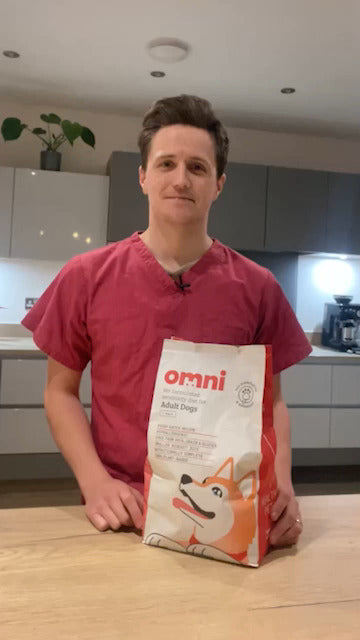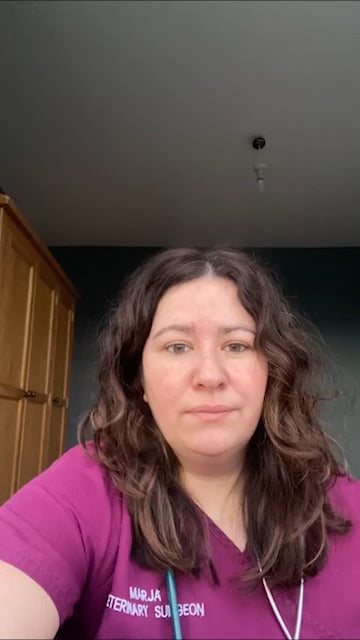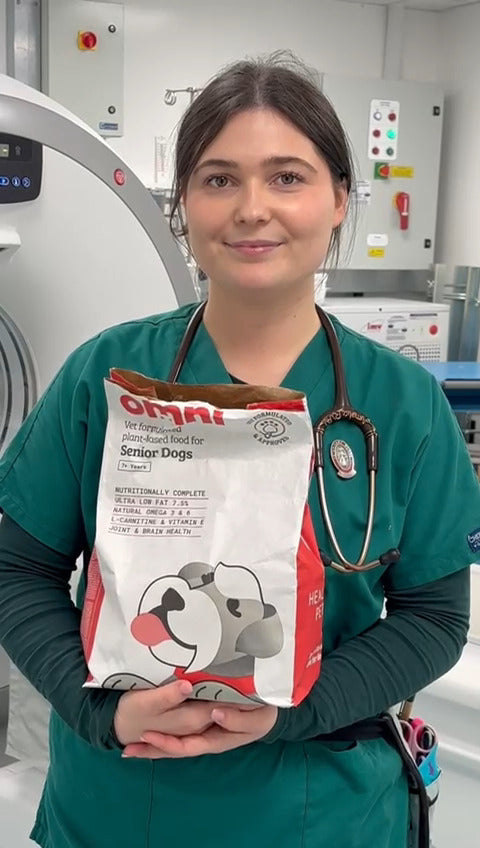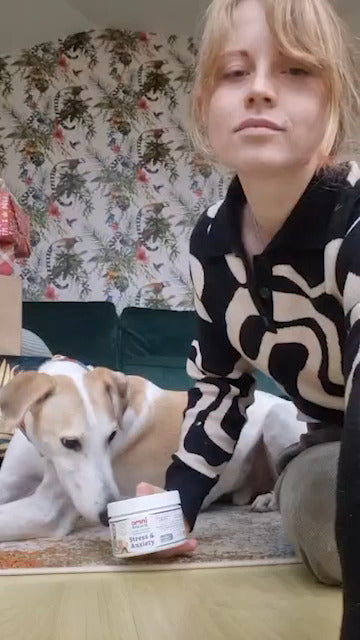The Science Behind Tail Wagging: Interpreting Your Dog’s Communication
We’ve all witnessed the joyful wag of a tail when you walk through the door, the eager flutters at mealtime, or the cautious sway when meeting new dogs. But what does tail wagging really mean?
Contrary to the popular belief that a wagging tail always signals happiness, tail movement is a sophisticated form of canine communication. The speed, direction and position of the wag can express everything from excitement to unease.
At Omni, we’re passionate about helping dog carers understand their companions better - from nutrition to non-verbal cues. Here’s what science reveals about tail wagging and what your dog might truly be saying.
The Role of Tail Wagging: A Canine Communication Tool
Dogs are highly social animals, and tail movement is one of their most expressive non-verbal signals. Much like human facial expressions or tone of voice, a dog’s tail conveys emotional intent and helps them communicate with people and other dogs.
Puppies begin wagging their tails around three to four weeks old as they start interacting with littermates. Over time, this develops into a nuanced language capable of expressing friendliness, uncertainty or warning.
Tail wagging isn’t random - it’s deliberate communication that reflects both emotion and intent.
Understanding Tail Position and Movement
Each wagging pattern reveals a distinct emotional state. Here’s how to interpret them:
High Tail, Slow Wag
-
Meaning: Cautious, alert, or assessing.
Dogs raise their tails high when evaluating new situations. A slow wag signals attentiveness rather than excitement.
Low Tail, Fast Wag
-
Meaning: Submissive but friendly.
A low tail with rapid motion shows friendliness mixed with uncertainty - often during greetings.
Rightward Tail Wag
-
Meaning: Positive emotions.
A landmark study from the University of Trento by Quaranta et al. (2007) found dogs wag their tails more to the right when feeling relaxed or happy, such as greeting their owner.
Leftward Tail Wag
-
Meaning: Stress or nervousness.
The same research observed that left-sided wags occurred more often when dogs faced dominant or unfamiliar dogs - a subtle but measurable sign of tension.
Full-Body Wag (Helicopter Tail)
-
Meaning: Pure joy.
This whole-body wag shows genuine excitement - often during joyful reunions or play.
Tucked Tail
-
Meaning: Fear or anxiety.
A tail tucked tightly between the legs signals distress or submission. If you see this, identify possible triggers and offer reassurance or calm surroundings.
Supporting a Calm, Communicative Dog
Once you start observing your dog’s tail and body language, you’ll quickly see how much they’re trying to tell you. The more relaxed and secure they feel, the more balanced their communication becomes.
Offer Mental and Physical Engagement
Boredom and lack of stimulation can contribute to stress or inconsistent signals. Research on environmental enrichment confirms that mental activities improve focus and reduce anxiety in dogs.
A 2022 study by Hunt et al. found that interactive enrichment - such as puzzle feeders and scent games - significantly improved emotional wellbeing in domestic dogs.
Omni’s novel protein treats are perfect for rewarding calm behaviour during enrichment or training.
Provide a Tranquil, Balanced Diet
Your dog’s mood is linked closely to their gut health. Studies like AlShawaqfeh et al. (2021) and Kiełbik et al. (2024) show that a diverse gut microbiome supports emotional regulation and stress resilience.
A diet that promotes digestive balance - rich in prebiotics, probiotics, and easily digestible novel proteins - supports both physical and emotional wellbeing.
Establish Predictable Routines
Dogs thrive on consistency. Regular feeding, walking and rest times help create emotional stability, which translates into calmer tail and body language.
Encourage Positive Conduct
Celebrate relaxed, joyful wags with gentle praise, affection or play. If you observe tension or uncertainty, respond calmly and reduce environmental stressors rather than forcing interaction.
Final Reflections: What Is Your Dog Really Communicating?
Your dog may not speak, but their tail tells a powerful story. By understanding its language - from the confident sweep of happiness to the subtle flick of anxiety - you gain a clearer window into their emotions.
Combined with proper nutrition, structure and empathy, this awareness strengthens your bond and helps your dog feel secure, understood and deeply connected to you.
At Omni, we believe that the more you understand your dog, the better you can support their health, happiness and communication - tail wags and all.
Explore Omni’s Calming and Digestive Support Range
Sources
-
Quaranta, A., Siniscalchi, M., & Vallortigara, G. (2007). Asymmetric tail-wagging responses by dogs to different emotive stimuli. Current Biology. Available at: https://pubmed.ncbi.nlm.nih.gov/17371755/
-
Hunt, R.L. et al. (2022). Effects of Environmental Enrichment on Dog Behaviour. Animals (Basel). Available at: https://www.ncbi.nlm.nih.gov/pmc/articles/PMC8772568/
-
AlShawaqfeh, M.K. et al. (2021). The role of gut microbiota in dog health: Current evidence and future perspectives. Animals (Basel). Available at: https://doi.org/10.3390/ani11051292
- Kiełbik, P. et al. (2024). The Relationship between Canine Behavioral Disorders and Gut Microbiome. Animals (Basel). Available at: https://doi.org/10.3390/ani14142048







 85 Great Portland Street, 1st Floor, London, W1W 7LT United Kingdom
85 Great Portland Street, 1st Floor, London, W1W 7LT United Kingdom